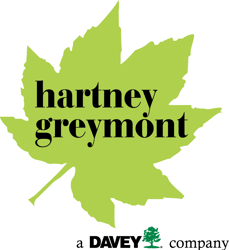As evergreens in home landscapes, pine trees certainly add some color, texture, and aroma that can’t be beat.
Even though pine trees are reliable landscape additions, you might be concerned when you see traditionally green needles looking a bit off-color. In fact, you might ask yourself, “Why is my white pine turning yellow?”
Should you be worried? For some species – like white pine – yellowing on older leaves is a natural occurrence in October. These common New England evergreens go through an annual drop to shed old needles.
In fact, pines will only hold one or two years of needles before replacing them. If a needle drop happens over a longer period of time, it can be more noticeable, causing concern. But your white pine should be just fine. Other reasons for yellowing can be a nutrient deficiency, pest infestation, or a result of heat or drought stress.
Let’s talk about reasons you might notice your white pine needles turning yellow and how you can address these worries and keep your white pine healthy.
How To Tell If Your Pine Trees Are Dead Or Dormant
Older pine needles on white pine trees turn yellow naturally in fall in New England. Then they turn reddish-brown before eventually falling off of the tree. This natural aging process is OK.
However, pay close attention to the following signs your pine tree may be sick in case you notice something more is wrong with your white pine.
- Discolored needles – This is usually caused by too much or too little water.
- Needles dropping early – Shedding needles in late summer or early fall is normal, but dropping at other times of year can be the result of improper irrigation, needle blight, nitrogen deficiency, or insect infestation.
- Spots on pine cones – Black spots on pine cones could signal a fungal disease .
- Bark issues, including pitch tubes caused by pine bark beetles – Insects are usually to blame for bark holes.
- Leaking sap – Sap is natural wound protection for pine trees, such as damage to trunks.
Have your certified arborist take a look if you see any symptoms that worry you to confirm a diagnosis and suggest a treatment plan.
Common White Pine Threats To Watch For In Massachusetts
What could be causing you white pine needles to look a bit less healthy than usual? In New England, white pines face some common threats. Stay on the lookout for these potential issues.
White Pine Needle Disease – You’ll notice browning needles on the newest tree growth, as well as sparse foliage, with this disease, which is caused by four fungal pathogens. Good cultural practices can help reduce the spread of this disease. Removing and destroying heavily infected trees, including stumps, is also important.
White Pine Blister Rust – Whole branches or tree sections can turn yellow and then brown or red with this disease. You may even see cankers on the stems with fruiting bodies or sap, as well as cracked or swollen bark. This disease can weaken trees and make them more susceptible to other problems, such as bark beetles.
White Pine Weevil – The tips of your younger white pines will start to die in areas of full sun when white pine weevil is present. You might also see pest exit holes near these tips. This pest is considered one of the more destructive of eastern white pine. Certified arborists can use insecticide in spring, targeting the overwintered adults before they lay eggs.
Pine Bark Adelgid – While this pest may not damage your white pine, it can cause visual issues, such as a woolly white material encasing eggs that is present on the bark of larger branches and stems. Older white pines are more susceptible to the pest. Certified arborists may use horticultural oil to help control this insect.
Pine Needle Scale – This white pine pest appears in the form of small, hard, white shells on needles, making those needles mottled gray instead of green. As the infestation progresses, needles can begin to die. A Massachusetts Certified Arborist can inspect your pine for infestation confirmation and suggest next steps, as well as optimize treatment timing.
At Hartney Greymont, we have local arborists throughout Massachusetts located in Needham, Concord, Danvers, Cape Cod, and the surrounding areas to monitor the health of your trees for early signs of trouble.



